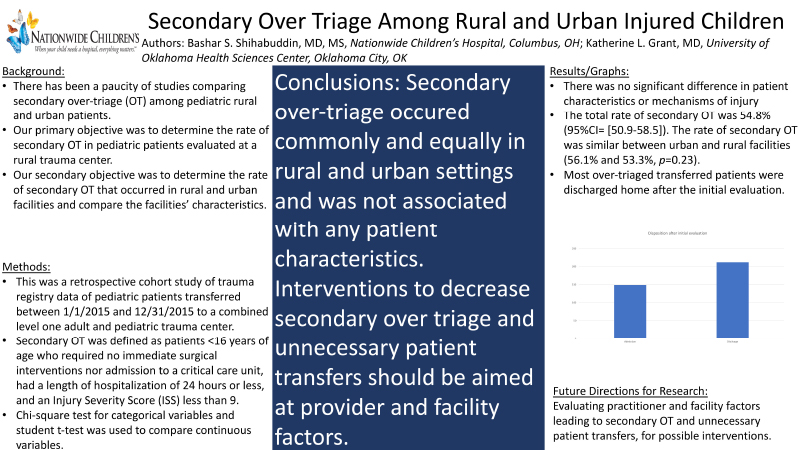
Leading through advocacy, education, and relationships
Secondary Over Triage Among Rural and Urban Injured Children
Category: 2020
Author: Bashar Shihabuddin
Institution Affiliation: Nationwide Children's Hospital
Background: We aimed to determine the rate of secondary over triage (OT) among rural and urban transfers to a level one trauma center, as well as compare patient and visit characteristics between the two groups. Methods: This was a retrospective cohort study of data at a combined level one adult and pediatric trauma center. Pediatric patients evaluated between 1/1/2015 and 12/31/2015 were eligible for the study. Secondary over triage was defined as patients under the age of 16 years who required no immediate surgical interventions nor admission to a critical care unit, had a length of hospitalization of 24 hours or less, and an Injury Severity Score (ISS) less than 9. Findings: A total of 983 patients were included in the final analysis. The total rate of secondary OT was 54.8% (95%CI= [50.9-58.5]). The rate of secondary OT was similar between urban and rural facilities (56.1% and 53.3%, p=0.23). Significantly more OT patients in both groups were discharged from the emergency department after evaluation (p<0.0001). Conclusions (implications for practice): Secondary over-triage occurred commonly and equally in rural and urban settings and was not associated with any patient characteristics. Interventions to decrease secondary over triage and unnecessary patient transfers should be aimed at provider and facility factors.
Watch Video
 Phone: 567-712-0697
Phone: 567-712-0697
